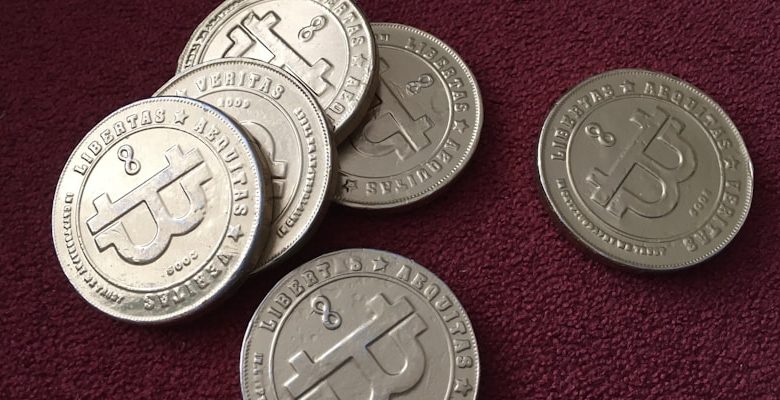Coins That Could Disrupt Traditional Finance

- Exploring the rise of cryptocurrencies
- How digital assets are challenging traditional banking systems
- The impact of blockchain technology on financial transactions
- Understanding the concept of decentralized finance
- Emerging coins that are revolutionizing the financial industry
- Potential risks and rewards of investing in alternative coins
Exploring the rise of cryptocurrencies
Cryptocurrencies have been gaining popularity in recent years, with more and more people exploring the potential of digital assets as an alternative to traditional finance. The rise of cryptocurrencies can be attributed to their decentralized nature, which eliminates the need for intermediaries such as banks. This not only reduces transaction costs but also provides users with more control and privacy over their financial activities.
Furthermore, cryptocurrencies operate on blockchain technology, which ensures transparency and security in transactions. This has helped to build trust among users who are wary of centralized financial systems. As a result, cryptocurrencies are being increasingly seen as a viable option for transferring funds internationally, as well as for investment purposes.
The growing popularity of cryptocurrencies has also led to the emergence of new coins that aim to disrupt traditional finance even further. These coins often come with unique features and functionalities that set them apart from the more established cryptocurrencies like Bitcoin and Ethereum. For example, some coins offer faster transaction speeds, lower fees, or enhanced privacy features.
Overall, the rise of cryptocurrencies is reshaping the financial landscape, providing users with more options and flexibility in managing their finances. As the technology continues to evolve, it will be interesting to see how cryptocurrencies will continue to disrupt traditional finance in the years to come.
How digital assets are challenging traditional banking systems
Digital assets are posing a significant challenge to traditional banking systems around the world. These new forms of currency, such as cryptocurrencies and stablecoins, are revolutionizing the way people store and transfer money. The decentralized nature of digital assets means that they are not controlled by any central authority, making them more secure and transparent than traditional banking systems.
One of the main ways that digital assets are disrupting traditional banking is through their low fees and fast transaction times. Traditional banks often charge high fees for international transfers and can take several days to process transactions. In contrast, digital assets can be transferred instantly and with minimal fees, making them a more attractive option for many people.
Another way that digital assets are challenging traditional banking systems is through their accessibility. Anyone with an internet connection can access and use digital assets, whereas traditional banking services are often limited to those with a bank account. This increased accessibility is particularly beneficial for people in developing countries who may not have access to traditional banking services.
The impact of blockchain technology on financial transactions
The widespread adoption of blockchain technology has revolutionized financial transactions by providing a secure and transparent way to transfer assets digitally. This disruptive technology has the potential to significantly impact traditional financial systems in various ways:
- Increased security: Blockchain technology uses advanced encryption techniques to secure transactions, reducing the risk of fraud and unauthorized access.
- Transparency: The decentralized nature of blockchain allows for real-time tracking of transactions, providing greater visibility and accountability.
- Cost efficiency: By eliminating intermediaries and automating processes, blockchain reduces transaction fees and speeds up settlement times.
- Global reach: Blockchain enables cross-border transactions without the need for currency conversion, making it easier and more cost-effective to conduct international business.
Overall, the impact of blockchain on financial transactions is profound, paving the way for a more efficient, secure, and accessible financial ecosystem. As more industries and institutions recognize the potential of blockchain technology, we can expect further disruptions to traditional finance in the coming years.
Understanding the concept of decentralized finance
Decentralized finance, often referred to as DeFi, is a revolutionary concept that aims to disrupt traditional financial systems. Unlike centralized financial institutions such as banks, DeFi operates on blockchain technology, allowing for peer-to-peer transactions without the need for intermediaries. This not only eliminates the need for third-party trust but also reduces transaction costs and increases financial inclusion.
One of the key principles of decentralized finance is the concept of smart contracts. These self-executing contracts are stored on a blockchain and automatically execute when predetermined conditions are met. This eliminates the need for traditional legal agreements and ensures that transactions are transparent and secure.
DeFi also offers a wide range of financial services, including lending, borrowing, trading, and asset management. Users can access these services directly through decentralized applications (dApps), without the need to rely on centralized platforms. This provides greater control over one’s finances and opens up new opportunities for innovation and investment.
Overall, decentralized finance represents a paradigm shift in the way we think about and interact with money. By leveraging blockchain technology and smart contracts, DeFi has the potential to democratize finance and empower individuals to take control of their financial future.
Emerging coins that are revolutionizing the financial industry
There are several emerging coins in the cryptocurrency market that have the potential to disrupt traditional finance systems. These coins are leveraging innovative technology to offer faster, more secure, and more cost-effective financial transactions. By utilizing blockchain technology, these coins are revolutionizing the way we think about money and finance.
One such coin that is making waves in the financial industry is Ripple (XRP). Ripple is focused on enabling fast and low-cost cross-border payments, making it an attractive option for businesses looking to streamline their international transactions. With partnerships with major financial institutions around the world, Ripple is quickly gaining traction as a viable alternative to traditional banking systems.
Another coin that is changing the game in finance is Ethereum (ETH). Ethereum is not just a cryptocurrency, but a platform that allows developers to build decentralized applications (dApps) on its blockchain. This opens up a world of possibilities for creating smart contracts, decentralized finance (DeFi) applications, and even non-fungible tokens (NFTs). With its robust ecosystem and strong community support, Ethereum is reshaping the way we interact with financial services.
Potential risks and rewards of investing in alternative coins
Investing in alternative coins can offer both potential risks and rewards for investors. It is important to carefully consider these factors before deciding to allocate funds to this asset class.
One potential risk of investing in alternative coins is their volatility. These coins can experience significant price fluctuations in a short period of time, which may result in large losses for investors. Additionally, alternative coins are not as regulated as traditional financial assets, which can leave investors vulnerable to fraud and market manipulation.
On the other hand, investing in alternative coins can also offer significant rewards. Some of these coins have the potential to disrupt traditional finance and offer innovative solutions to existing problems. By investing in these coins early on, investors may be able to capitalize on their growth potential and generate significant returns.
It is important for investors to conduct thorough research and due diligence before investing in alternative coins. By understanding the potential risks and rewards associated with this asset class, investors can make informed decisions and mitigate potential losses.



